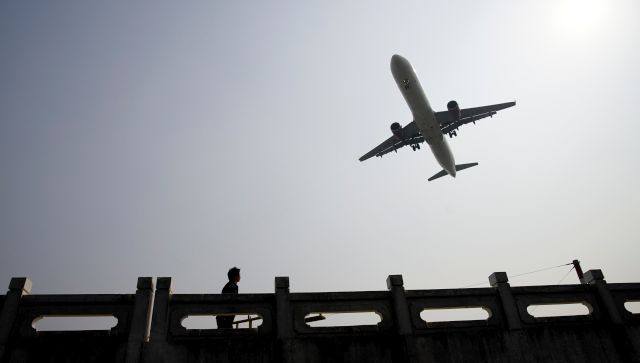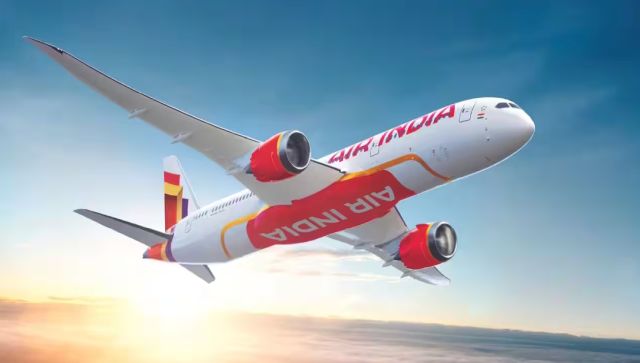New Delhi - The opening up of Indian Airlines to 100 percent foreign direct investment (FDI) came on Monday after a lot of hesitation and dire warnings of compromising - what else - the nation’s security by allowing foreigners control in a sensitive sector.
For years we have been paranoid about security implications of allowing foreigners in the cockpit as far as our airlines are concerned, so much so that the first such step in 2012, when FDI by foreign carriers was allowed but capped at 49 percent, was also widely seen as a government bowing to the wishes of some powerful global airlines.
Monday’s announcement, as reported by CNBC-TV 18, which allows up to 100 percent FDI in schedule airlines and regional carriers subject to government approval, has the potential to bring remarkable changes to India’s aviation sector in the near future.
As per a government release, foreign airlines can still pick up only up to 49 percent equity in Indian carriers. This should not be a problem since the remaining can be bought by an entity like a sovereign fund of the country the purchasing carrier belongs to, taking effective control to 100 percent.
That India needs FDI is a no-brainer. That it will help almost all sectors including civil aviation is also obvious. So the downside to this decision of allowing up to 100 percent FDI in Indian Airlines seems to be limited.
Perhaps Air India may now find that the virtual monopoly it had over overseas routes gradually recedes as stronger, deep-pocketed foreign players may set up ventures in India (or buyout existing ones) and take over lucrative foreign routes. Air India may need to pull up its socks but for private airlines, there should be little cause for concern.
Not many countries around the globe allow up to 100 percent FDI in airlines. But then India is still in a nascent stage as far as aviation sector goes and interestingly, it holds the largest growth potential with up to 20 percent CAGR projected for the next 3-5 years. This means as a market, we need more funds, more well-funded airlines with international linkages - and this is possible only if international airlines are allowed to come in with control in any venture.
As of now, foreign investment up to 49 percent is allowed under the automatic route in Scheduled Air Transport Service/ Domestic Scheduled Passenger Airline and regional Air Transport Service.
The release said, “It has now been decided to raise this limit to 100 percent, with FDI up to 49 percent permitted under automatic route and FDI beyond 49 percent through Government approval. For NRIs, 100 percent FDI will continue to be allowed under automatic route. However, foreign airlines would continue to be allowed to invest in capital of Indian companies operating scheduled and non-scheduled air-transport services up to the limit of 49 percent of their paid up capital and subject to the laid down conditions in the existing policy.”
Here are some implications of opening up the sector:
1) Up to 100 percent FDI in airlines will encourage well-funded foreign airlines to come and set shop in India. Though proposals for new airlines may not flood our regulators immediately, there will be many suitors for sure. The Gulf airlines, Qatar Airways in particular, have been very vocal about enhancing their connectivity to and from India. Qatar has actually been trying to woo IndiGO for quite some time now, given India’s geographical placement and traffic potential.
2) In case multiple foreign airlines do decide to either set up companies from scratch in India or buyout existing airlines, the Indian flyer will have much more choice for outward bound flights. Take the case of some busy cities across the globe like Madrid or St Petersburg, Moscow or Shanghai. Either we have no direct flights connecting any Indian city to these cities or existing connections are inadequate. This situation developed because earlier Air India had the right of first refusal on overseas routes and later, private airlines did not have enough muscle to cover all those cities where India lacks connectivity. This situation should improve considerably once we open up our skies.
3) Ideally, once the FDI regime has been liberalised, it makes little sense to still keep some countries out of the Open Skies loop. In the Civil Aviation Policy released last week, the government has proposed open skies on a reciprocal basis with SAARC countries and those beyond 5000 km. It should now release the iron grip over countries closer home and allow open skies with the Gulf, Singapore, Turkey etc.
4) The Indian market should see some consolidation in the medium term due to the FDI cap removal. Ideally, only very large airlines or those that serve regional routes will remain in business. Some existing private airlines facing trouble with costs could look to exit through a sellout to a foreign player.
The FDI bonanza follows close on the heels of the government diluting the controversial 5/20 rule which now only mandates that India’s airlines have a fleet of 20 aircraft before flying overseas. Perhaps this fleet size stipulation will also be examined now that the government seems to be in a generous mood?
When the restriction on FDI from foreign carriers in Indian airlines was lifted in 2012, two brand new airlines took shape - Vistara with 49 percent participation by Singapore Airlines, and AirAsia India – which was initially a three way JV between AirAsia BhD, Tata Sons and Telestra Tradeplace.
Let us see how many proposals for new airlines or buyout of existing Indian airlines arrive quickly. India is a market no airline in the world would ignore.


)




)
)
)
)
)
)
)
)